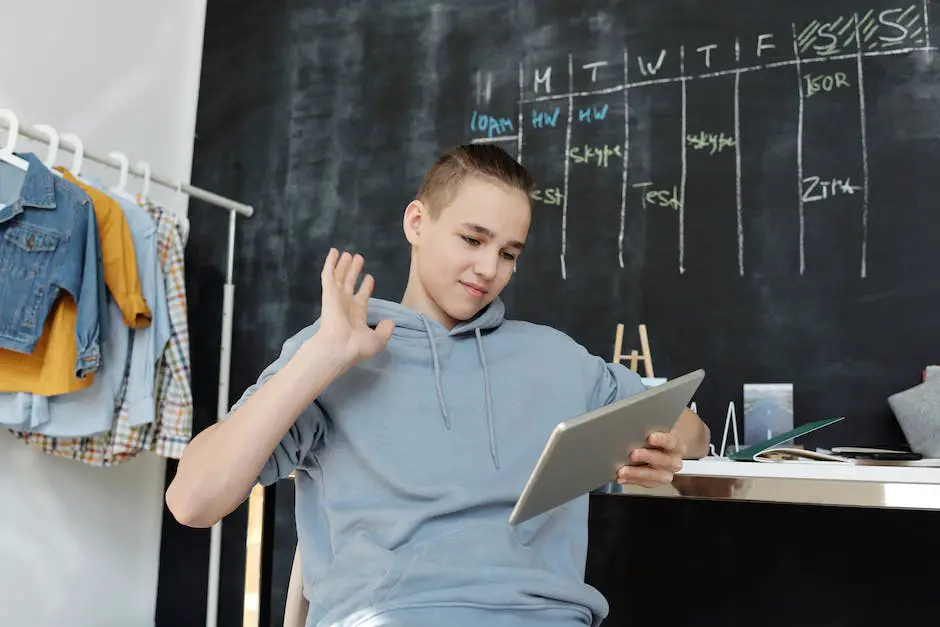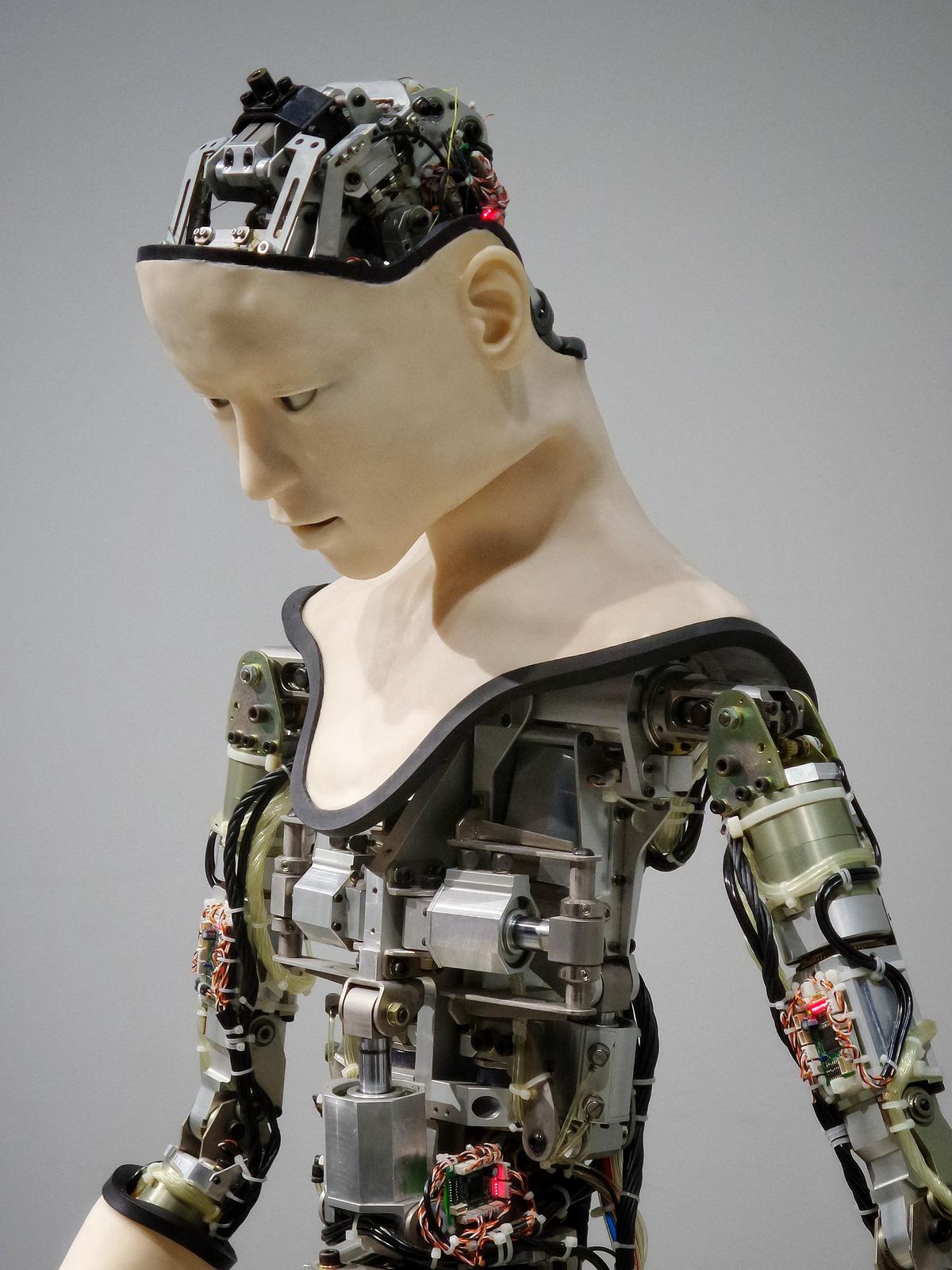As the digital age progresses, Artificial General Intelligence (AGI) is steadily emerging as a potent force in transforming not only technology as we know it but also various aspects of human society. The aim of this discourse is to unravel the complexity surrounding AGI, distinguishing it from its predecessor – narrow AI, and shedding light on its evolution, models, and techniques that have shaped its trajectory. Heart of this discourse is the innovative ToddlerAGI program which significantly exemplifies the application of AGI in resolving real-world conundrums. Through an exploration of ToddlerAGI’s key components and underlying technologies, we delve into how the convergence of deep learning, reinforcement learning, and developmental psychology can empower AGI to be a gamechanger in automation and decision-making.
Understanding Artificial General Intelligence (AGI)
Understanding Artificial General Intelligence
Artificial General Intelligence (AGI) can be delineated from Narrow AI based on its ability to understand, learn, adapt and replicate intelligent behavior, not in a singular and specific area, but in virtually any form of intellectual task that a human being can do. Unlike Narrow AI, which is designed to perform a specific task such as voice recognition or image processing, AGI has the capacity to outperform humans at most economically-valuable work.
Historically, AGI is not a novel concept, though its practical application has been largely elusive. However, various models and techniques devised over the years, such as rule-based systems, deep learning, and reinforced learning, have endlessly been pushing the boundaries of AGI capabilities. Driven by the computational power of modern processors and the availability of extensive nuanced data, AGI has been able to make far-reaching strides from mere conceptualization to groundbreaking implementations.
Potential of AGI in Automation and Decision-making
AGI’s potential lies in its versatility and its ability to automate complex tasks that necessitate human-like comprehension, reasoning, and decision-making skills. It can integrate and understand diverse fields of knowledge and apply this understanding to various tasks, making AGI effectively capable of replacing numerous job roles.
The decision-making prowess of AGI can be attributed to its ability to process vast quantities of data, consider all possible outcomes and variables, learn from previous experiences, and ultimately make more informed and optimized decisions. This capability has implications for virtually all industries, from automating complicated procedures in manufacturing to making important investment decisions in finance, or diagnosing diseases in healthcare.
Exploring the Future of AGI via ToddlerAGI
ToddlerAGI is an innovative approach to developing AGI, modeling how natural human intelligence evolves. Designed to follow a baby’s process of trial-and-error engagement with its surrounding world, ToddlerAGI replicates this mechanism digitally. The key advantage of ToddlerAGI is its potential for growing AI systems capable of authentic understanding and adaptation to unfamiliar tasks and environments— an impressive progression from where we stand currently in AI tech.
Looking ahead, ToddlerAGI presents an exciting opportunity for advancing AGI deployment. By nurturing an AGI system to mature like a human toddler, it may gain a higher degree of environmental understanding and adaptivity compared to existing possibilities. However, this methodology is not without complexities, necessitating substantial computational resources and training time akin to the lengthy development journey of a human from infancy to complex cognitive proficiency.
Despite these considerations, the pathway towards the future of AGI via ToddlerAGI appears exceedingly promising. As we further our knowledge in the fields of neurosciences, cognitive psychology and AI, we seem ever closer to the development of a genuine intelligent machine equipped with generalized learning and adaptability.

Introduction to ToddlerAGI
Digging Deeper into ToddlerAGI
Taking the concept of ‘Artificial General Intelligence’ (AGI) a step forward in its complexity, ToddlerAGI is designed to mirror the way a toddler learns and assimilates its environment. Invoking elements of AI and cognitive psychology, ToddlerAGI represents a unique class of coginitive models having AI as its core that leverages the realm of general intelligence. Eschewing the traditional AI course of pre-defining responses, ToddlerAGI instead employs learning algorithms, allowing it to gather knowledge, emulate human cognition, and exhibit behavior that closely aligns with human cognitive capabilities.
Functioning of ToddlerAGI
The functioning of the ToddlerAGI concept is hinged on enabling AI models to follow a trajectory similar to a human toddler, from learning less complex tasks to gradually grasping and performing more complicated tasks through continuous interaction and learning. These models learn experientially, much like a human child. They observe their environment, process data, make decisions, learn from mistakes, and improve through recursive self-improvement. This is made possible through diverse learning algorithms and expansive neural networks.
Purpose of ToddlerAGI
The primary purpose of ToddlerAGI is to bridge the gap between human cognition and machine cognition. Present AI, though advanced, often struggles with tasks that involve creativity, generalization, and decision-making in real-world, dynamic environments. ToddlerAGI aims to overcome these limitations of modern AI, offering exciting new possibilities. By building AI which learns, processes, and reacts like a human brain, we could be looking at a future where machines can handle a broad range of cognitive tasks that were once considered uniquely human.
Enabling AGI through ToddlerAGI
By employing a ToddlerAGI approach, researchers hope to create AGI that truly emulates human cognition. The role of ToddlerAGI in enabling AGI lies in its foundational concept of nurturing AI to “grow” much like a human. This is different from creating AI that simply operates on pre-defined programming. AGI, or strong AI, aspires to achieve a level of machine intelligence that can understand, learn, and apply knowledge just like a human across a wide array of tasks and environments rather than in just a single, narrow domain.
The Anticipated Impact of ToddlerAGI on AGI’s Future
Envisioning the future of Artificial General Intelligence (AGI), ToddlerAGI stands as a significant concept that could shape and drive AGI development to unprecedented levels. Applying the principles of ToddlerAGI, AGI systems are expected to evolve from mere tools to more complex entities capable of comprehending and adapting to the intricacies of human intelligence. This progression not only presents countless new opportunities and could remodel sectors like healthcare, entertainment, and education, but also deepens the discourse around the ethical, security and societal implications of co-existing with highly advanced AGI. The dawn of an AGI future powered by ToddlerAGI is contingent on how effectively we address these emerging questions.

Key Components and Underlying Technologies of ToddlerAGI
An Exploration into the Concept of ToddlerAGI
ToddlerAGI introduces a novel approach to the development of Artificial General Intelligence (AGI), a specialized branch of AI noted for matching human-level proficiency and adaptability. It adopts strategies from the domain of developmental psychology studies on human infants, renowned for their impressive learning capabilities and adaptability. The implementation of ToddlerAGI aims to construct AGI systems that imitate the learning process of human infants, starting from a rudimentary knowledge base and progressing to learn about the world in a linear, incremental fashion.
Deep Learning in ToddlerAGI
A critical technology behind ToddlerAGI is deep learning, a machine learning method built off neural networks with three or more layers. These networks attempt to simulate the behavior of the human brain—albeit at a very elementary level—to “learn” from large amounts of data. A large part of deep learning focuses on interpreting sensory data to understand the world in terms of different senses. While a downside of deep learning is that it requires extensive training and vast amounts of data to function accurately, its capacity to ‘learn’ from raw data inputs is essential to ToddlerAGI.
Reinforcement Learning in ToddlerAGi
Reinforcement Learning (RL) is another crucial aspect of ToddlerAGI. It’s a type of machine learning where an agent learns to behave in an environment, by performing actions and discovering errors or rewards. Just like a toddler learns to walk or eat by trial and error, RL trains AGI models by rewarding them for correct actions and penalizing them for mistakes. Unlike supervised learning methods, RL can make decisions based on long-term outcomes.
Developmental Psychology Insights
ToddlerAGI borrows heavily from developmental psychology to design its learning processes. The development of toddlers involves obtaining broad skills from a starting point of significantly less knowledge. This learning is incremental and multisensory—simultaneously incorporating inputs from sight, sound, touch, and other senses. The methods used by babies and toddlers to understand the world around them provide critical insights into creating AGI systems, which are adaptable, flexible and learn continuously.
Unification of Deep Learning, RL, and Developmental Psychology
For ToddlerAGI, the combination of deep learning, reinforcement learning, and developmental psychology creates a potent mix. The primary objective is to harmonize these aspects to create an AGI system that can learn like a toddler, developing an adaptive and comprehensive understanding of the world from minimal initial knowledge. For instance, a ToddlerAGI system could leverage deep learning to process sensory data, use reinforcement learning to adjust its behavior and apply principles from developmental psychology to continuously refine its learning process. Predicting the future of AGI through this approach involves a projection of continuous learning and adaptability in upcoming technology.
Opportunities and Hurdles in ToddlerAGI Development
Although ToddlerAGI provides immense potential, it is not without its selection of challenges that need to be addressed earnestly. The intricate task of incorporating the human faculties of touch, taste, and smell into AGI models is a burgeoning research field. The amalgamation of deep learning with Reinforcement Learning (RL) to develop a unified architecture which takes advantage of the resilience of deep learning and RL’s decision-making prowess is another primary area of focus. Furthermore, translating revelations from developmental psychology into practical algorithms calls for a more substantial comprehension of human cognitive processes. The exploration of these areas is vital to unlocking ToddlerAGI’s capability of designing truly sophisticated and adaptive AGI systems.

Evaluating the Ethical Implications of AGI and ToddlerAGI
Implications of AGI on Job Automation
Looking ahead, it’s believed that Artificial General Intelligence (AGI) and its future iteration, ToddlerAGI, could profoundly affect job automation. Possessing the ability to learn, comprehend, and execute any cognitive task that a human can, these AI systems might be tasked with automating a plethora of industries. Whether simplifying repetitive tasks in manufacturing or handling complex assignments in healthcare, policy-making, or entertainment, AGIs have the potential to reassess and reform the labor market entirely. However, this reformation could result in significant job losses, leading to socio-economic upheaval and underscoring the need for careful management and regulation.
Privacy Challenges with AGI and ToddlerAGI
Sophisticated intelligence systems like AGI and ToddlerAGI may raise serious privacy implications. The knowledge-modeling techniques of these systems often necessitate the collection and learning from vast datasets, including personal and sensitive information. As these systems become pervasive, issues surrounding data privacy, control, and consent will come to the fore. It becomes indispensable to develop AGI systems with respect for privacy, ensuring that the data is obtained, stored, and used within ethical and legal bounds.
Security Risks of AGI
The development and integration of AGI into various societal spheres also imply potential security risks. As AGIs have the potential to outperform humans in most economically valuable work, they might also surpass human abilities in cybersecurity tasks. Therefore, malicious uses of AGI could pose significant threats, from hacking into secure databases or online systems, launching sophisticated cyber-attacks, or even manipulating other AGIs. It therefore becomes paramount to develop robust security measures that can keep pace with advancements in AGI technology.
Potential Misuse of AGI and ToddlerAGI
The potential misuse of AGI and ToddlerAGI poses another significant ethical quandary. While AGI could be used to solve complex societal problems, in the wrong hands, it could also be used to exacerbate them. For example, despotic regimes could use sophisticated AGI technology to further social control, undermine democracies, or wage advanced warfare. Furthermore, ToddlerAGI, due to its ability to learn and evolve, could unintentionally develop harmful behaviors if influenced by harmful inputs or reward functions.
Ethical Application of AGI and ToddlerAGI
Given these concerns, it is essential to focus on the ethical application of AGI and ToddlerAGI. Oversight mechanisms, guidelines, checks, and balances need to be established to ensure transparent, fair, and accountable use of AGI. Furthermore, incorporation of ethical considerations right from the AGI development phase might be considered crucial. This could involve integrating ethical guidelines into AI algorithms, ensuring unbiased data sources and datasets, and including diverse perspectives in AGI policy and decision-making.
Despite potential challenges, AGI, and notably ToddlerAGI, is set to bring forth an era of unprecedented transformation. By embracing a responsible, ethical, and accessible strategy, we can harness the power of AGI to tackle complex issues, improving overall human welfare while curbing the risks and any potential damage.
Photo by possessedphotography on Unsplash
Examining Case Studies and Application of ToddlerAGI
An Overview of ToddlerAGI
ToddlerAGI is not just a theory but a unique angle on AGI (Artificial General Intelligence) development that mirrors the nurturing and growth trajectory of a human toddler. This approach strategically designs AGI systems to comprehend the world via essential sensorimotor interactions. ToddlerAGI underscores important elements like curiosity-driven exploration and learning through mistakes, comparable to a human toddler’s learning progression.
The future of AGI with ToddlerAGI
The future of AGI with ToddlerAGI could usher in groundbreaking advancements in AI development. Its approach of pattern recognition and machine learning, mirroring the learning process of a human toddler, might potentially solve complex tasks beyond specific remits. This includes possessing a better understanding of context, adeptly dealing with unknown problems, and adapting to varying situations. It might reinforce AI’s ability to comprehend, learn, and plan, effectively translating to advancements in areas like robotics, automation, and data analysis.
Real-World Application of ToddlerAGI
One of the intriguing real-world applications of ToddlerAGI lies in Robotic Process Automation (RPA). These RPAs, learning through a ToddlerAGI approach, could self-improve their performance based on interactions with their environment. Over time, they’d better understand the intricacies of processes, efficiently identifying and rectifying errors, and evolving their operational efficiency.
ToddlerAGI in Medicine
Further utilization of ToddlerAGI is evident in medical fields, specifically regarding disease diagnosis and patient care. A ToddlerAGI system using reinforcement learning could assess a patient’s symptoms and medical history, gaining better diagnostic accuracy with each iteration. It could also learn from previous case studies, fine-tuning its diagnostic metrics based on the real-world outcomes of patients with similar symptoms.
Military Applications of ToddlerAGI
Another sector benefiting from ToddlerAGI is the military, where AGI systems can be used for strategic planning and simulations. ToddlerAGI theory can be employed to train military AI systems, entrusting them with a learning approach mirroring how human strategists gain expertise. These systems would provide varied strategic solutions based on evolving battlefield conditions, essentially learning and adapting from each simulated or real-world operation.
Evolving Education with ToddlerAGI
The education sector can significantly benefit from ToddlerAGI’s capabilities. An AI developed with ToddlerAGI could serve as a personalized tutor, adapting the pedagogy according to each student’s learning pace and style. This approach would not only involve imparting education but also entail learning from the student’s progress, making education more flexible and personalized.
Challenges and Opportunities with ToddlerAGI
While the theoretical and potential practical applications of ToddlerAGI present exciting possibilities, there are significant challenges to implementing this strategy. Like a human toddler, a nascent AGI system wouldn’t immediately know everything. It might take considerable time before the system is ready for tasks equal to or surpassing human intelligence. However, the prospect of AGI systems growing and learning continuously, akin to human intelligence, offers an immense opportunity for expanding AI’s role in various sectors.
Through an in-depth exploration of various case studies and potential applications, we can begin to grasp the significant role ToddlerAGI may potentially play in directing the future of AGI. With the continually advancing field of artificial intelligence, the effectiveness of this unique approach remains to be seen in time.

Projections for the Future of ToddlerAGI
The Progressive Learning Journey of ToddlerAGI
ToddlerAGI refers to a unique form of artificial general intelligence (AGI) system that learns incrementally, mirroring the learning process of a human toddler. It initiates its learning journey with a minimal knowledge base, gradually gathering information and comprehending various concepts. It makes sense of its environment, and develops its cognitive abilities in a fashion much akin to a toddler’s cognitive development path. The evolution of ToddlerAGI, therefore, is a continual process that closely emulates the stages of human cognitive development.
Potential Influence of ToddlerAGI on Job Markets
The potential influence of widespread ToddlerAGI adoption on the job market could be profound. As ToddlerAGI systems become more capable, they could potentially assist, or even replace, human beings in a multitude of jobs, from manual labor to high-cognition tasks. With ToddlerAGI taking over jobs that require consistency and accuracy, human employees will be able to focus on roles that require more complex thinking and unique human capabilities.
Impact on Industries
The impact of ToddlerAGI is projected to be significant across several industries, including manufacturing, healthcare, transportation, and more. Manufacturing plants could employ AGI systems in production processes, introducing seamless automation, enhancing output quality, and reducing operational costs. In the healthcare sector, ToddlerAGI could analyze patient data, identify patterns, and provide critical insights to doctors for accurate diagnosis and effective treatment. Furthermore, autonomous vehicles powered by AGI could revolutionize the transportation industry, making human drivers unnecessary.
The Social Impact
The advent of ToddlerAGI and AGI overall also comes with significant implications for society. It promises to change the way we interact with technology, making it more personalized and intuitive. AGI machines could take over many daily tasks, leading to enhanced accessibility for people with disabilities and the elderly. However, there’s also the challenge of ensuring that AGI ethics align with human values, as well as potential societal disruptions from job displacement and concerns about privacy and security.
Effects on the Economy
Economically, ToddlerAGI could bring about a major revolution. It promises to boost productivity, improve efficiency, and lead to the creation of new industries, just as the computer and the internet did. That said, this technological transformation could also exacerbate income disparity, as those able to capitalize on the new technology reap most of the benefits, while others may face job loss or require skill retraining. Policymakers will thus need to grapple with striking a balance between leveraging AGI’s benefits and mitigating its potential adverse impacts on income distribution and social stability.
Future of AGI and ToddlerAGI
Finally, it’s crucial to appreciate that the concept of ToddlerAGI is still largely theoretical and undergoing constant research. The development and mainstream adoption of AGI technologies pose numerous technical challenges that scientists and engineers are still working to overcome. Still, the future of AGI and ToddlerAGI seems boundless, with potentials in nearly every sector and aspect of life. Coming years will be pivotal, with the opportunity for breakthroughs that could supercharge humanity’s ability to solve its most complex and pressing problems. Indeed, the era of ToddlerAGI is shaping up to be one of the most transformative periods in human history.

Photo by britishlibrary on Unsplash
As we stand on the threshold of an era potentially dominated by AGI, understanding the intricate mechanisms behind such a system is no longer an idle curiosity, but a necessity. Positioning ToddlerAGI at the helm of this discourse has offered a valuable insight into the practical implications of AGI, it’s ethically weighted questions, and prospective applications. The culmination of these explorations projects a future where AGI, through platforms such as ToddlerAGI, will alter dramatically the landscape of various industries, job markets, social dynamics, and economies, marking the onset of yet another industrial revolution. Yet, with great power comes great responsibility, and the ethical implications of AGI assure that our journey forward will be anything but dull.

